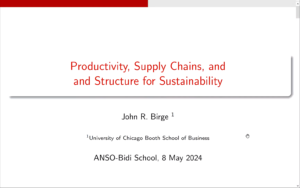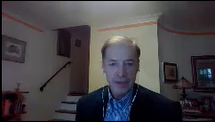On May 8, 2024, at 20:00 (UTC+8), the ANSO BIDI School (Belt and Road International Innovation and Development Institute Network) kicked off the third module of its eighth semester online. The session featured a notable lecture by Professor John R. Birge, titled “Productivity, Supply Chains, and Structure for Sustainability.” Over seventy participants from countries along the Belt and Road attended the online event.
John R. Birge is the Hobart W. Williams Distinguished Service Professor of Operations Management at the University of Chicago Booth School of Business. He earned his bachelor’s degree in mathematics from Princeton University in 1977 and his master’s and doctoral degrees in operations research from Stanford University in 1979 and 1980, respectively. He joined Chicago Booth in 2004. Professor Birge is a Fellow of INFORMS, a Distinguished Fellow of the MSOM Society, a member of the National Academy of Engineering, and the Editor-in-Chief of Operations Research. Before joining Chicago Booth, he was the former dean of the Robert R. McCormick School of Engineering and Applied Science at Northwestern University. He has also served as a consultant to various organizations, including the University of Michigan Hospitals, Deutsche Bank, Allstate Insurance Company, and Morgan Stanley, integrating these experiences into his teaching.


Professor John Birge during the course
Professor Birge’s lecture provided an overview of his research focus, emphasizing the importance of supply chain structure in sustainability. He highlighted that supply chain structure encompasses not only products and services but also financing elements. The main topics covered included forms and impacts of supply chain financing, payment and priority issues within supply chains, the interplay between loan defaults and supplier profits, effects of trade credit prioritization on supply chain efficiency, trade credit and supply chain risk management, and the reconstruction of global supply chains and trade credit demand. Professor Birge also presented existing data and case studies to help participants better understand supply chain structures.
At the end of the session, participants expressed that they had gained valuable insights and looked forward to the next lecture.
